The Top Mobile Live Streaming Equipment for Every Budget in 2025
To create a high-quality mobile streaming setup, you must choose the right mobile live streaming equipment. Both beginners and professionals should invest in the right gear, which can enrich live streaming from mobile by improving audio, video, and overall production quality.
Today, there are more options than ever that suit different budgets. Portable live-streaming devices and top-tier cameras and accessories will certainly contribute to a seamless and engaging viewer experience.
In this post, we explore the best mobile cameras for live streaming, high-performance streaming smartphones, and must-have accessories to optimize your mobile broadcasting setup. Whether you’re looking for an entry-level solution or professional-grade gear, this list will help you achieve outstanding results.
Table of Contents
- The Benefits of Mobile Live Streaming
- Recommended Mobile Streaming Equipment Setup
- Digital Tools for Mobile Live Streaming
- AI-Powered Mobile Live Streaming
- Why Use Dacast for Mobile Live Streaming?
- FAQs
- Conclusion
The Benefits of Mobile Live Streaming
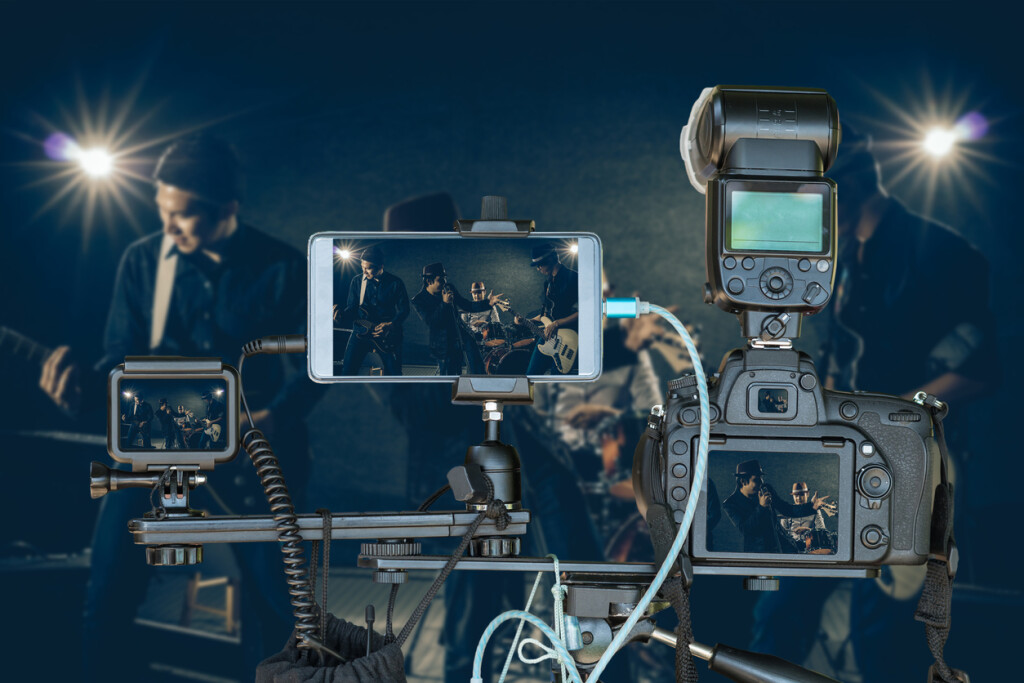
Mobile live streaming has revolutionized how broadcasters create and share content. With powerful mobile streaming equipment, you can stream high-quality video remotely and on the go, eliminating the need for a traditional studio setup.
Why Mobile Live Streaming Matters
Thanks to advanced mobile broadcasting devices and high-performance smartphone cameras, content creators, journalists, and event organizers can broadcast remotely without compromising quality. Mobile broadcasting is particularly useful for outdoor streaming, sports broadcasting events, on-site news reporting, music festivals, virtual events, and independent content creation.
Beyond convenience, live streaming from mobile allows broadcasters to reach audiences in real time, fostering engagement and interaction. Even with a limited budget, creators can leverage portable streaming setups to deliver professional-grade content.
The Impact of Mobile Network Advancements on Live Streaming
One of the most notable advancements in on-the-go streaming is 5G-Advanced (5G-A), the next phase of 5G technology. This upgrade brings several factors into our focus.
For one, faster data speeds. They are used for ultra-high-definition smartphone live streaming without buffering. Even if you find yourself in crowded areas like concerts or sports arenas, you can count on more reliable connectivity. Finally, there is lower latency, ensuring real-time audience interaction for live broadcasts.
All this leads to the conclusion that wireless live streaming setups will become even more powerful, making high-quality live streaming more accessible than ever.
Recommended Mobile Streaming Equipment Setup
Mobile live streaming requires a different setup approach compared to traditional studio streaming. While you can live stream from a phone with just a high-quality smartphone like the latest iPhone or Samsung Galaxy, investing in additional mobile live streaming equipment can dramatically enhance the quality of your content.
Let’s explore the best live streaming equipment for an optimized mobile broadcasting setup.
1. Reliable Camera
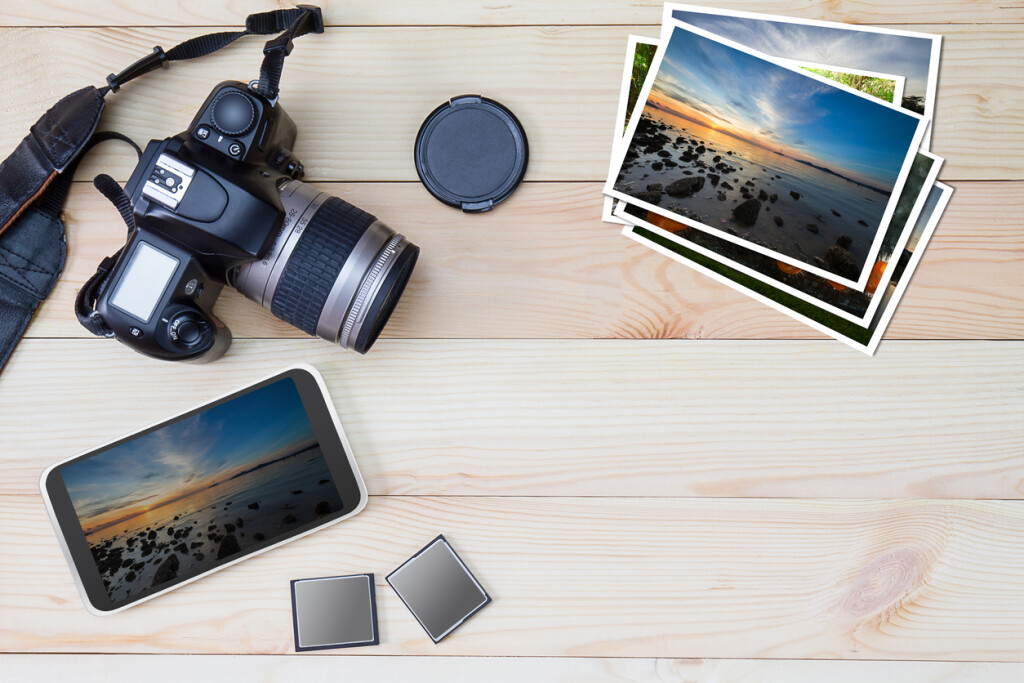
A high-quality camera is the backbone of any mobile video streaming setup. Fortunately, smartphone cameras have made significant strides, narrowing the gap between mobile and traditional professional cameras. High-end smartphones now feature multiple high-resolution lenses, larger sensors, and advanced computational photography. This makes them a viable option for many professional applications, including mobile streaming.
However, regular cameras such as DSLRs still hold an edge in overall image quality, dynamic range, and versatility. They offer superior control over settings with the ability for interchangeable lenses and better ergonomics for extended use. All these are essential qualities for portable streaming setups.
For those looking into cameras for mobile streaming, smartphones provide a convenient and powerful solution, particularly for on-the-go. But dedicated cameras remain the preferred choice for more demanding tasks. They ensure top-tier quality and flexibility in various shooting environments.
For those who prefer portable live-streaming devices, here are some top camera options:
- iPhone 15 Pro Max: One of the best mobile phones for live streaming, offering 4K ProRes recording and advanced computational photography.
- GoPro HERO12 Black ($349.99): A rugged streaming camera for phone users needing durability and action-focused shots.
Sony ZV-1 II ($899.99): Ideal for live streaming from mobile, featuring a flip-out touchscreen and enhanced autofocus.
Feel free to check out our comparison of the top 4K cameras for a few more camera suggestions.
One thing that matters here is that our mobile streaming setup is only as strong as our internet connection. Even with a camera for mobile live streaming capable of 4K video, slow network speeds can degrade the quality. A wireless live-streaming setup powered by 5G-Advanced (5G-A) ensures smoother, higher-quality broadcasts.
AI-Enhanced Cameras
Newer cameras now include AI-driven features that adapt to different lighting conditions, stabilize footage, and improve focus without manual adjustments. These enhancements make streaming on the go smoother and more professional. Look for AI-enhanced features in mobile streaming equipment like:
- Sony Alpha 7R V: AI-powered autofocus and subject recognition
- DJI Osmo Pocket 3: AI-driven motion tracking for solo creators
2. Audio Capture Equipment
While smartphones come with built-in microphones, an external mic significantly improves sound clarity. Whether you’re conducting interviews or streaming live events, mobile broadcasting equipment with high-quality audio capture is essential.
Top choices for mobile audio:
- Lapel microphones (clip-on mics): Affordable and ideal for solo streaming
- Handheld microphones: Best for interviews and live reporting
- Wireless microphone kits: Ideal for high-mobility broadcasting
Which route you go will depend on the purpose of your live stream. The reason for using external audio equipment is that they’ll provide better background noise cancellation compared to internal microphones. It’ll enable you to deliver crisper audio during your live stream.
Another reason for using them is that your smartphones would be used for shooting the video, meaning they’ll likely be away from you. On the contrary, an external microphone can be clipped to your clothes and can transmit audio to your smartphone. This would enable better sound quality.
3. Stabilizing Equipment
Holding a smartphone or camera in your hand can lead to some shakiness in the video. Shaky footage leads to a less professional-looking stream. To avoid this, we recommend using a portable streaming setup that benefits from stabilizing tools like:
- Gimbals: Best for mobile creators who are constantly moving ($40-$150)
- Tripods: Perfect for stationary broadcasts like interviews or news reporting ($30-$50)
4. Portable Lighting Gear
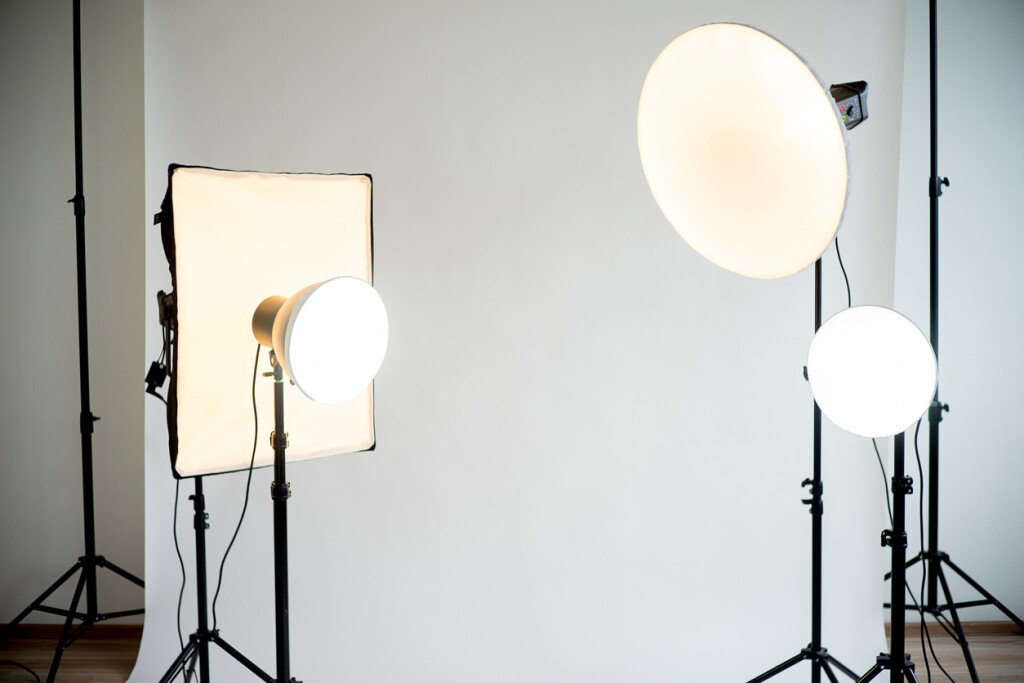
Lighting can make or break your live streaming setup. Whether you’re streaming indoors or in low-light environments, consider some of the following options.
If you are using a tripod, a simple ring light will do the trick. You can get a ring light tripod for $90 to $150. Most ring lights can be adjusted to use different colors and brightnesses, which gives you a bit more control over the lighting situation.
Streaming with a handheld gimbal requires a different video lighting setup. Since you’re carrying this equipment around, you don’t want anything too heavy. A clip-on light that lights up behind your “selfie” camera can be helpful if you’re recording yourself talking. You can get a clip-on light for $20 to $50.
Those of you who can afford it should opt for powerful video lighting equipment, complete with studio lights, which can help improve the video quality dramatically. They are the most expensive option (over $150) but also provide studio-quality lighting.
5. Encoder
If you’re using a DSLR or camcorder instead of a smartphone for streaming, you’ll need live stream encoding software to convert RAW video into a digital format for streaming.
There are both hardware and software encoders. Hardware encoders are typically bulky and best suited for streaming in the studio. Some hardware encoders for live streaming can be worn and easily transported by a camera crew. Hardware encoders can cost thousands of dollars.
On the other hand, software encoders are much less bulky and much more affordable. You can get one for $100 to $500. However, these require a laptop or computer to run, so they aren’t always the best choice for streaming on the go.
If you are recording with a mobile device as opposed to a camera, you may not need an encoder since it captures digital files rather than RAW video files. Furthermore, mobile live-streaming apps generally take care of this process if there are any file compatibility issues. We will discuss this more shortly.
6. Extra Batteries
Extra batteries or a portable power bank is a must for you when you’re streaming on the go since most of your mobile live streaming equipment is probably wireless. Losing charge on an important piece of equipment in the middle of a stream can be disastrous.
If you are streaming from your iPhone or another mobile device, that is the most important piece of equipment. Make sure that you have a portable battery and the appropriate cables. A pocket-sized power bank will cost you $30 to $50, and it’s ideal for quick top-ups. On the other hand, getting a high-capacity power station will cost more ($100-$200), but it’s great for extended streams and supports multiple devices.
7. Smartphones with Integrated AI
The next evolution of smartphone live streaming is AI-powered devices that enhance video production in real time. AI-integrated devices will redefine mobile broadcasting efficiency, which is why upcoming models like the AI Phone (expected release late 2025) promise:
- Built-in AI tools to optimize lighting, stabilization, and auto-captioning
- Seamless multi-platform streaming without needing third-party apps
Digital Tools for Mobile Live Streaming
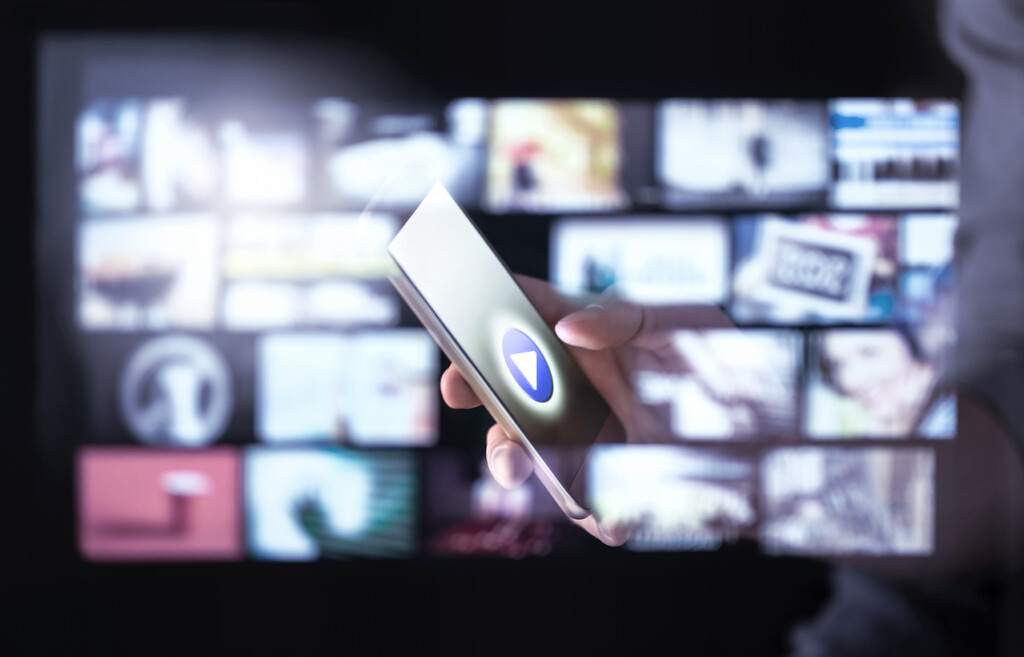
Now that we’ve covered the mobile live streaming equipment needed for professional broadcasting, it’s time to explore the digital tools that enhance the mobile streaming setup. These tools are essential for live streaming from a phone, providing real-time editing, overlays, and seamless integration with streaming platforms.
Mobile Streaming App
A mobile streaming app is a crucial tool for live streaming from mobile. It captures video from your best phone or tablet for live streaming and transmits it to your chosen mobile video platform.
These advanced streaming apps allow real-time editing and mixing of content for a professional broadcast. You can add text or graphic overlays to enhance the production quality. You also get multi-platform streaming support where you can broadcast to YouTube, Facebook, Twitch, and more.
Ensure your chosen app supports your mobile broadcasting devices. For example, platforms like Dacast use RTMP ingest, meaning you need an RTMP-compatible mobile webcasting app.
Here are some of the best mobile live-streaming apps available for download:
- IBM Cloud Video
- Muvi Live
- Wirecast Go
- Broadcast Me
For a detailed comparison, check out our RTMP live-streaming app guide.
If you’re just looking to live stream from a phone without complex equipment, social platforms like Facebook Live, Instagram Live, and TikTok Live offer built-in mobile phone streaming capabilities. These are perfect for casual and audience-driven content without requiring enterprise-grade live-streaming equipment setup.
Live Streaming Platform
We already mentioned that your mobile streaming setup requires a live streaming platform to manage, host, and distribute your broadcast.
A professional mobile video platform ensures high-quality live streaming from mobile by:
- Delivering video via a reliable CDN to maintain a smooth stream for viewers worldwide
- Supporting video monetization through pay-per-view, ads, or subscriptions
- Providing a content management system (CMS) for organizing and scheduling streams
- Enhancing security with encryption and access controls to protect your content
The key advantage of a mobile video streaming platform is that it allows you to stream directly to your website or simulcast to multiple platforms like Facebook, YouTube, and Twitch. This multi-streaming approach helps you to tap into existing audiences, reach a wider audience, and maintain full control over your mobile broadcasting equipment setup and content.
Some examples of popular live-streaming platforms include Dacast, Brightcove, and Wowza. Check out our live-streaming platform comparison for an in-depth review of the 16 best options on the market.
AI-Powered Mobile Live Streaming
We are all very much aware that AI has made a big entrance into every area of our lives, and mobile live streaming is not an exception. Below, we are discussing some of the ways in which AI has made live streaming easier.
AI-Driven Streaming
Advanced interactive live streaming platforms now incorporate AI-driven tools to boost engagement and personalization. Live polls and Q&A sessions are used to encourage real time audience participation. Facial and object recognition are used to improve searchability and video tagging, while automated captions and translations make streams more accessible.
There are also AI-driven mobile webcasting tools that analyze video quality in real time. They are used to adjust bitrate and resolution dynamically and maintain the best phone streaming experience, even in low-bandwidth conditions.
AI in Network Optimization
With AI enhancing network performances, Telecom companies like T-Mobile US are exploring the potential of AI to create self-optimizing networks. These AI-powered networks can adapt in real time to user demands, ensuring that bandwidth is allocated efficiently.
For mobile live streaming, where a stable and fast network is crucial, AI’s ability to monitor and adjust network traffic dynamically helps avoid disruptions. AI is used to continuously adjust network settings to improve both speed and reliability.
AI in Video Encoding and Compression
Advancements in AI have entered video encoding and compression, making high-quality streaming more accessible, even on limited bandwidth networks. AI algorithms play a key role in optimizing video quality while reducing the necessary bandwidth for transmission. This means mobile streaming setups can deliver clear, crisp video with less data usage.
AI will provide smoother transmission without sacrificing the viewing experience. The ability to compress video efficiently without a noticeable drop in quality is especially beneficial when live streaming from phones or mobile devices in areas with weaker network connections.
Sustainability and Energy Efficiency
AI’s role in mobile streaming extends beyond performance and also includes driving sustainability. It helps reduce the infrastructure needed for live streaming by optimizing resource allocation.
Early tests indicate that AI-based mobile video streaming can lead to a 30% reduction in infrastructure, which translates to significant savings in both energy consumption and cost. With this energy-efficient streaming approach, companies are able to lower their carbon footprint, contributing to a more sustainable industry.
For mobile broadcasters, this means that live streaming from phones or other mobile streaming equipment can be more eco-friendly, aligning with growing environmental goals. AI’s ability to reduce energy demand while maintaining optimal video quality is a key step forward in making live streaming more sustainable.
Why Use Dacast for Mobile Live Streaming?
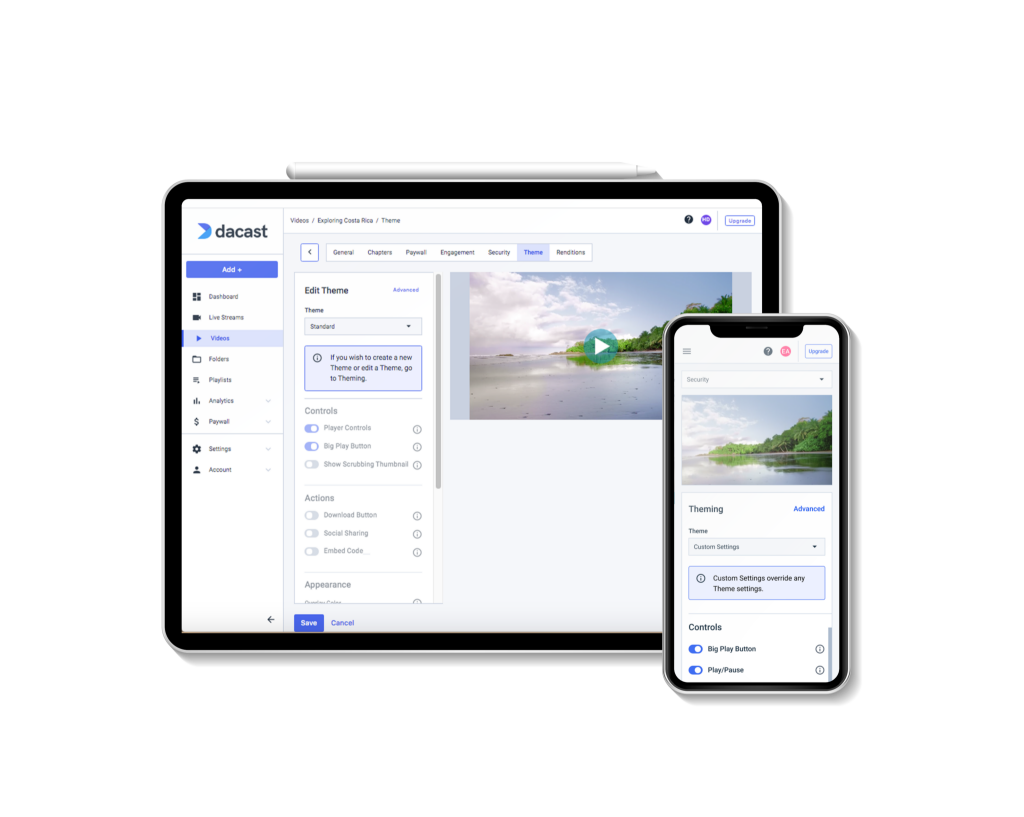
Dacast is an ideal live-streaming platform, especially for mobile broadcasting. Our platform checks all of a professional broadcaster’s boxes. Dacast is a unified streaming solution, meaning it supports both live streaming and on-demand video hosting.
We also support devices that allow for mobile multi-bitrate streaming and three video monetization methods, including subscriptions (SVOD), pay-per-view (TVOD), and ad insertion (AVOD). This is made possible by our secure video paywall that is built into the HTML5 video player.
Security is a top priority at Dacast, with advanced features such as AES encryption, password protection, domain and IP restrictions, tokenized access, and more. These features ensure that your live streams are protected, even when broadcasting from a mobile phone streaming setup.
Dacast also uses RTMP ingest, which means that it is compatible with a lot of affordable software encoders and all of the mobile streaming apps that we mentioned above. Lastly, the live broadcasting software also has a mobile SDK integration and player API, making it possible to build and create apps for live streaming on the go.
For anyone seeking a professional, secure, and scalable solution for mobile broadcasting, Dacast stands out as one of the best platforms to elevate your streaming experience.
FAQs
1. What is a camera encoder?
A camera encoder is a device or software that converts raw video from a camera into a digital format for streaming over the internet. It compresses and prepares video files to be broadcasted in real time.
2. What is a camera encoder vs decoder?
A camera encoder converts video into a digital format for streaming, while a decoder takes the digital video signal and turns it back into a viewable format for playback on a device. Encoders prepare content for distribution, while decoders help display it.
3. What does an IP encoder do?
An IP encoder converts video and audio signals from a camera into a digital format that can be transmitted over an IP (internet protocol) network. It’s typically used in streaming for live events and broadcasts.
4. What is the best video encoder to use?
The best video encoders depends on your needs and budget. For mobile live streaming, software-based encoders like OBS Studio and Wirecast are popular for their flexibility and ease of use. For higher-quality professional streams, hardware encoders like Teradek Cube are great options.
5. What equipment do I need for streaming?
To stream effectively, you’ll need a mobile streaming setup, including a reliable camera (smartphone or dedicated), a microphone for clear audio, stabilizing gear like a gimbal or tripod, lighting for visibility, and a strong internet connection. A streaming app and platform are also essential for broadcasting.
Conclusion
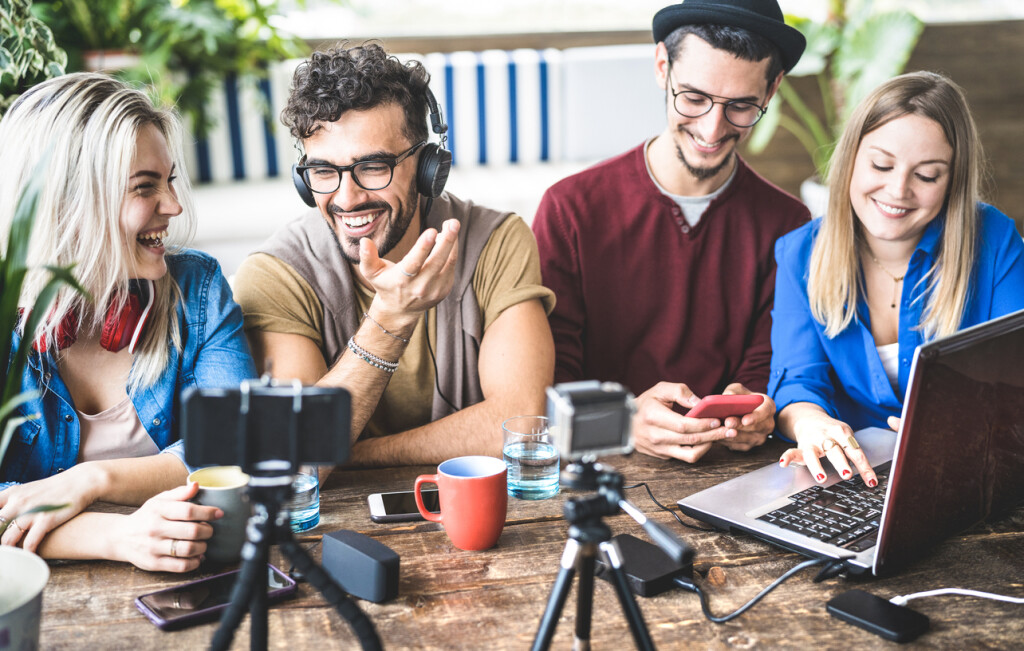
Creating an effective mobile stream setup is achievable no matter your budget. Essential mobile broadcasting equipment includes high-quality microphones, cameras, and stabilizers, amongst others we’ve listed. These ensure superior audio and video quality to enhance your live streams.
Selecting the right portable streaming devices means you can optimize your mobile streaming setup for professional results. Investing in gadgets needed for live streaming allows you to enhance the flexibility and convenience of portable streaming and better engage your audience, wherever they are.
When it comes to effective video streaming with high-quality audio and video, a great online video platform is Dacast. Dacast is fully equipped and ready to use with any of the mobile live-streaming apps mentioned above. With high compatibility and 24/7 support, getting up and running with Dacast is effortless.
You can try Dacast and all its features free for 14 days.
For more detailed resources on mobile live streaming, head over to the Knowledge Base section of our support center and type “mobile streaming” into the search bar. You’ll find tons of articles that cover different topics surrounding broadcasting on the go.
For regular tips on live streaming from a community of experts, as well as exclusive offers, you’re invited to join our LinkedIn group.
 Stream
Stream Connect
Connect Manage
Manage Measure
Measure Events
Events Business
Business Organizations
Organizations Entertainment and Media
Entertainment and Media API
API Tools
Tools Learning Center
Learning Center Support
Support Support Articles
Support Articles